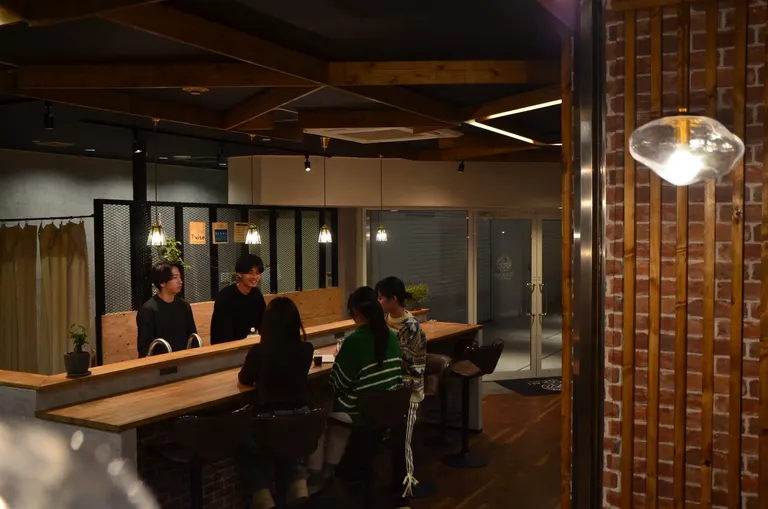![Salmon run upstream: The baton of life is passed on [Series "Nakamichi Tomohiro's Shibecha Weather" (12)]|Domingo](https://p1-634a4370.imageflux.jp/w=768,f=webp:auto,q=78/https%3A%2F%2Fdomingo.ne.jp%2Fwp%2Fwp-content%2Fuploads%2F2022%2F10%2Fe7077d5c54c966840fe5318ef0228596.jpg)
ARTICLES
Salmon run upstream: The baton of life is passed on [Series "Nakamichi Tomohiro's Shibecha Weather" (12)]
Hello everyone. My name is Tomohiro Nakamichi. In Shibecha town where I live, it has become colder and autumn has finally arrived. Today, I would like to talk about salmon migration.
Cherry salmon swimming upstream
In early September, cherry salmon began to swim upstream in Shibecha Town. Perhaps because of the heavy rainfall this year, many of them had been caught on the coast and had made it across the river, and the river I saw was packed with cherry salmon and salmon swimming upstream.
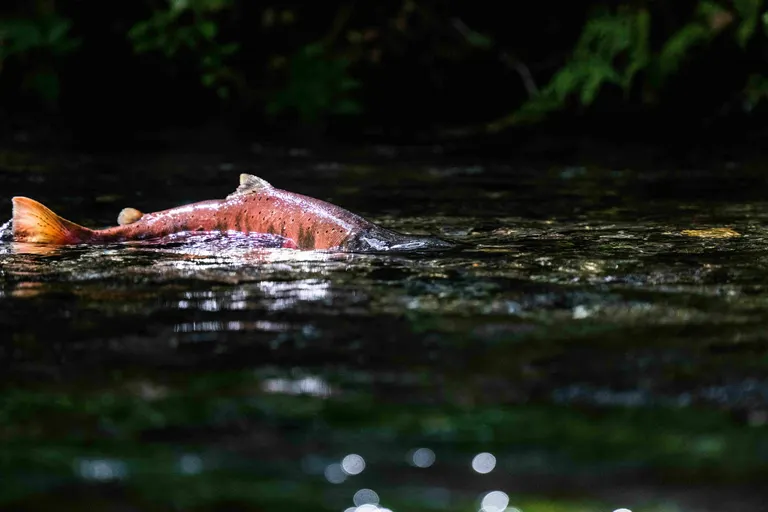
Cherry salmon in nuptial colors
Cherry salmon live mainly along the coast of the Sea of Okhotsk, the Korean Peninsula, and northern Japan, including Hokkaido. They are "anadromous" individuals that are "yamame" (Japanese trout) born in rivers and descend into the sea. On the other hand, individuals that remain in the river and spend the rest of their lives there are called "landlocked". Cherry salmon leave the rivers where they were born and travel to the sea, overcoming countless hardships to survive in the Sea of Okhotsk, and then return to their birthplace.
During the breeding season, males turn a pink color called nuptial coloring, as shown in the picture. This beautiful coloring is also the origin of the name "sakuramasu."
Conflict with chum salmon
At the same time as the cherry salmon, the chum salmon also began to swim upstream. The chum salmon is the type of salmon we generally call salmon, and most of them are a size larger than the cherry salmon.
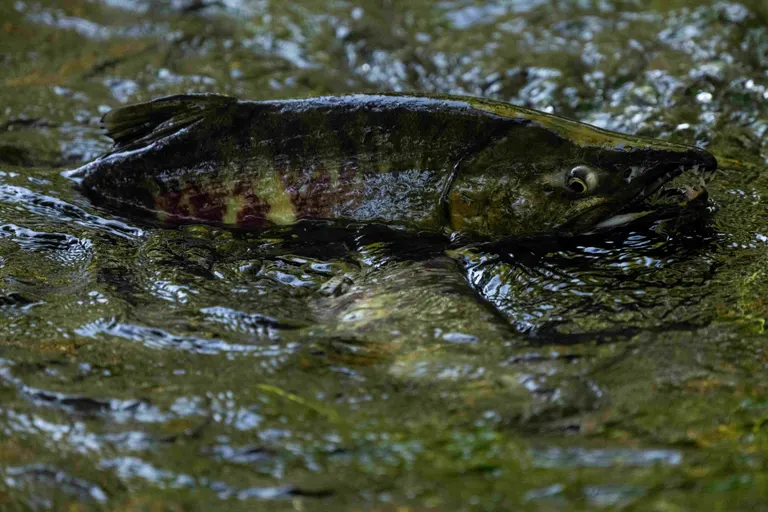
Chum Salmon
At this time of year, the river is filled with chum salmon and cherry salmon, and sometimes the cherry salmon and chum salmon fight, competing for spawning grounds. The male cherry salmon and chum salmon fight each other so hard that their dorsal and caudal fins gradually become worn out. This may look painful, but at the same time, it also shows the beauty of the brilliance of life.
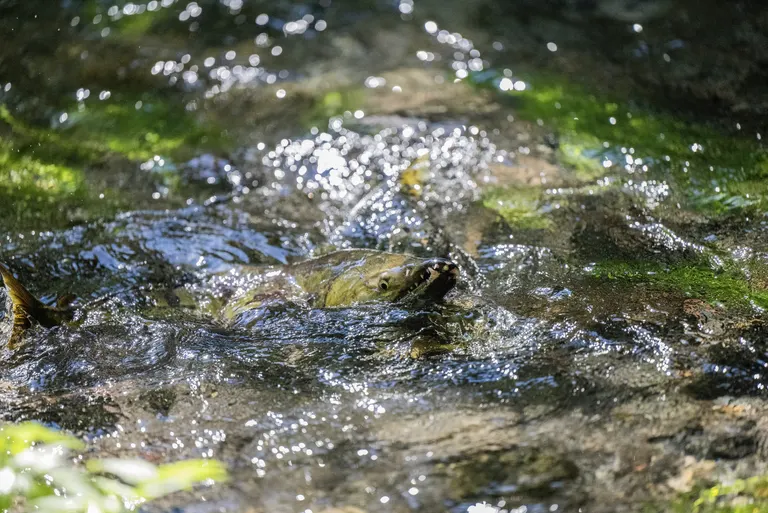
A chum salmon climbs up to bite, with another salmon below.
Ending the journey of life
Once reproduction is complete, the salmon will live out their lives. According to experts, cherry salmon and other salmon enter the rivers from the sea and do not eat any food after that. They swim upstream using only the nutrients they have stored in the sea and their own bodies, and at the end, they fight fiercely, and only those who survive can reproduce.
They then pass on their stronger genes to future generations and then scatter. The promise of the Earth, which has continued on forever since ancient times, was unfolding before my eyes. I was so engrossed in taking pictures that I wanted to see the brilliance of their lives to the very end, so I went back every day.
One day, I came across a salmon that had died, completely worn out. It had only been a few hours since it last lived, and it had only just lost all of its strength. I clasped my hands together and took a photo.
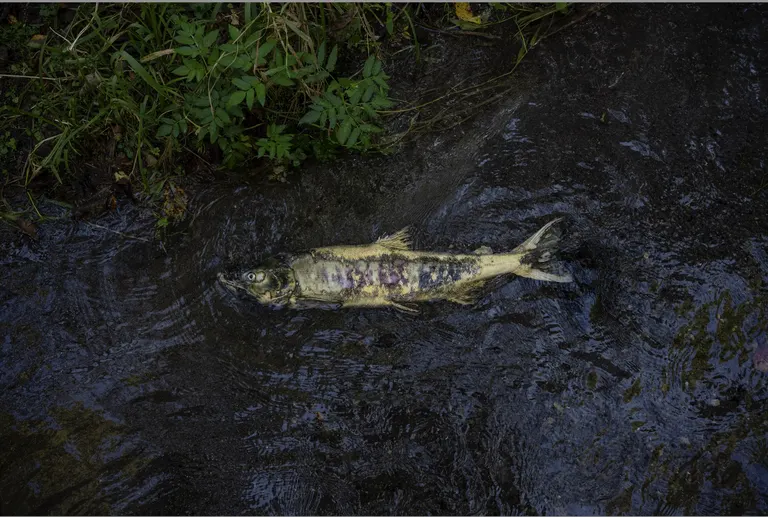
The salmon that had died. Its battered and injured body spoke of the fierceness of the fight.
This life was not wasted, and after a few days it was gone without a trace. Perhaps foxes, bears, and birds of prey took it as food. The remaining leftover food became food for tiny insects and even microorganisms, and the forest thrived.
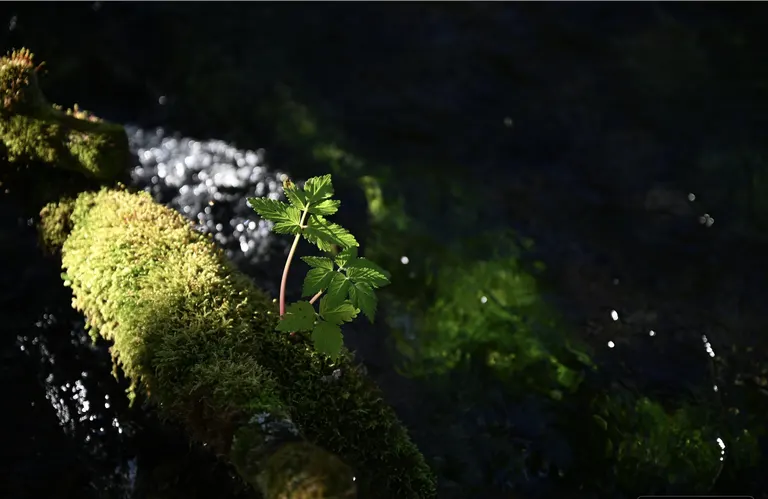
Life dwells on the riverbank. Nature has a transience and beauty that no one else can see.
They fly out to sea from the place where they were born, and finally die in the place where they were born for the sake of their future generations. I would like to be able to convey the current scenery to as many people as possible for the next generation in the same way. Shibecha Town, where such scenery can be seen up close, is an important place to me.
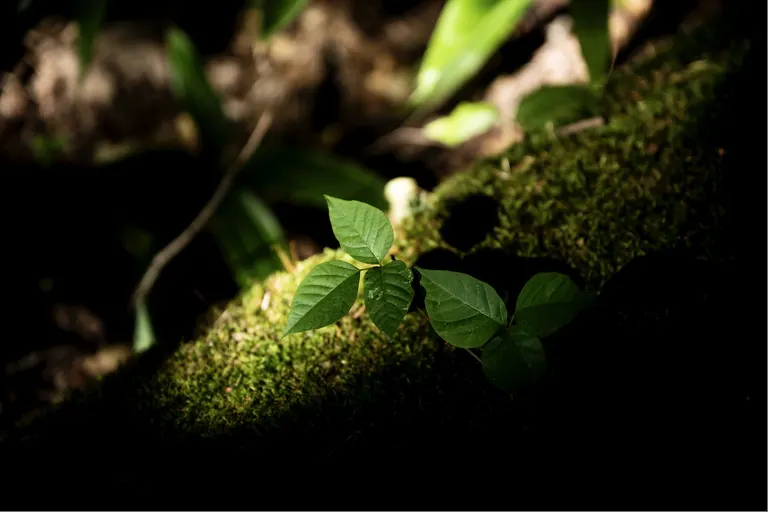
Life continues to grow. Even from fallen trees, life sprouted.
Conclusion
What did you think? This time, I focused on my favorite things, nature and animals. Being able to feel the change of seasons and days in nature reminds us of the important promise that we do not live by a calendar.
The series has been running for 12 issues now, about a year since it began. I'm very grateful to everyone who has been reading it. I hope you'll continue to support me.
Author profile
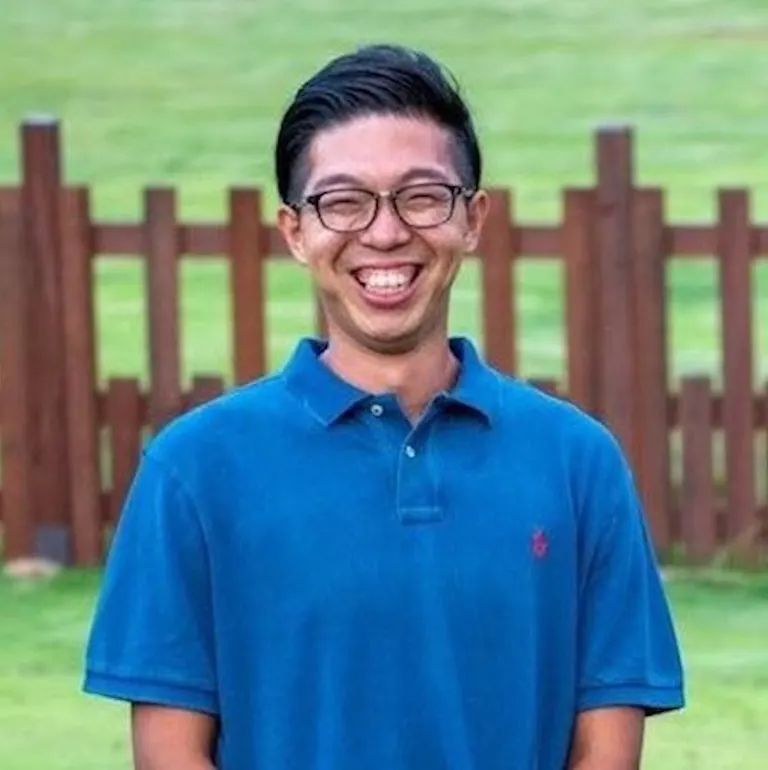 Shibecha Town Regional Revitalization Volunteer, Photographer, and Video Creator
Tomohiro Nakamichi
Shibecha Town Regional Revitalization Volunteer, Photographer, and Video Creator
Tomohiro Nakamichi
Born in Noda City, Chiba Prefecture in 1988. Ever since he was a child, he has loved animals and nature, and in his 20s he was involved in training various dogs as a dog trainer. Five years ago he began taking photographs and making videos of nature and animals. He currently lives in the woods of Shibecha Town, Hokkaido, where 20 wolves were kept, with four dogs. He is currently publishing his works on various social media platforms, with the theme of "the relationship between humans and animals."
Previous articles on "Nakamichi Tomohiro's Shibecha Weather"
Part 1: Taking photos and videos in Shibecha Town, a treasure trove of nature Part 2: What Keiko Nakamoto from "Kurashi Koto Kina" teaches us Part 3: Six months after moving to Hokkaido. Living with nature Part 4: Revitalizing the town through YouTube! What is the true regional revitalization that Shibecha Town is aiming for? Part 5: Pocket Cafe in Shibecha Town. Introducing the SL exclusive menu Part 6: Protecting Hokkaido's horses, the "Hokkaido Washuuma" - Mr. Masato Kohama's challenge in Shibecha Town Episode 7: "I want to convey the beauty of Shibecha through photography" by Kaori Miyazawa Episode 8: Spring has finally arrived! Beautiful new greenery, sunsets, and animals starting to raise their young Part 9: The charm of Mt. Nishibetsu, the symbol of Shibecha Town Episode 10: Introducing the charms and ways to enjoy Lake Toro, the largest lake in the Kushiro Wetlands! 11th: "Bekanbe Collection" held at Lake Toro in Shibecha Town







